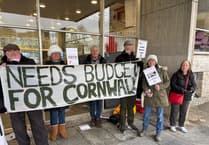This month marks two years since the end of Government consultation on energy efficiency targets in the private rented sector, yet just two years from the proposed implementation date we are none the wiser as to what these might be.
Ben Beadle, chief executive of the National Residential Landlords Association (NRLA), explains why the Government must tell landlords what’s going on.
New targets that could see landlords paying up to £10,000 per property for energy efficiency improvements have been on the cards for two years now.
A consultation into the controversial plans, which proposed all new tenancies in the PRS should have an Energy Performance Certificate (EPC) rating of C or above by 2025 – extending to all tenancies by 2028 – were first mooted at the end of 2020.
However, the Government has remained tight-lipped ever since.
As we start 2023, with the Government’s initial implementation date fast approaching, it is clear this is a completely unrealistic expectation.
What will the proposed changes mean?
The implications of the proposals as they stand will be far reaching.
Across England more than 58% of private rented households have an energy rating below a C, and a third of PRS homes were built prior to 1919, making the kind of improvements needed both challenging and expensive.
The cost implications of the plans alone are already giving many landlords sleepless nights, and not knowing what the targets might be, or when work will need to be completed, makes it impossible for them to budget or plan for a programme of works.
The blanket £10,000 cap on improvement works is also ill-conceived and unfair, disproportionately affecting landlords with properties in less affluent areas, where rents are lower, who will find it harder to fund improvement works.
All these concerns are also likely to be compounded by other issues, including severe shortages of labour and building materials, meaning even if landlords have the money to fund improvements it may be challenging to get work done quickly.
What the NRLA wants to see
The NRLA is now calling on the Government to put an end to speculation, and produce firm guidance as to what the new targets will be and the dates for compliance.
Even if these details are yet to be finalised, at the very least landlords need to know when the results of the consultation will be published and a timetable for any required legislation after that.
It is abundantly clear Ministers must scrap the initial 2025 and 2028 deadlines, as well as having a serious rethink on other elements of the plan, in particular the £10,000 cap on improvement works.
Instead we want to see the amount landlords should be expected to pay to be linked to average market rents in any given area.
Under the NRLA’s proposals, this would mean the amount a landlord would need to pay would taper from £5,000 to £10,000, taking into account different rental values (and by implication, property values) across the country.
Alongside this, the NRLA is calling for a package of fiscal measures to support investment. This should include the development of a new tax allowance for landlords who are undertaking works towards reaching Net Zero.
Everyone wants to see properties as energy efficient as possible, but the plans as they stand are, to us, dead in the water.
The Government needs to go back to the drawing board to come with a fair, sensible set of proposals and a realistic timescale in which to implement them.
The plans, as they currently stand, rely on a misguided assumption that landlords have unlimited sums of money.
They also fail to accept the realities of different property and rental values across the country, and that the private rented sector contains some of the most difficult to retrofit homes.
We know from our own research landlords are not the ‘fat cats’ we are made out to be by the media and in addition to the delays stifling the provision of new homes to rent, it could also force landlords out of the market during a time of rental supply crisis.
Ministers need to take a smarter approach if we want to ensure improvements to the rental housing stock are made, while keeping good landlords in the market and encouraging them to continue to invest.





Comments
This article has no comments yet. Be the first to leave a comment.